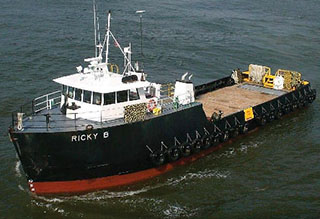Tugs, OSVs safer than cargo vessels, but crew believe commercial pressure can still trump safety
Half of all crew members interviewed for a study of international workboat safety said they would compromise safety rather than displease customers or senior management.
But tugs and OSVs generally have better safety and compliance performance than larger cargo vessels, according to the report sponsored by Helm Operations, Victoria, British Columbia, which provides operations and maintenance management software to the international tug and barge industry.
Titled “The Impact of Crew Engagement and Organizational Culture on Maritime Safety in the Workboats and OSV Sectors,” the 118-page paper is touted as the first comprehensive survey of worldwide workboat safety practice. It comes from six months of research by Catherine Austin and Isabelle Rojon of Fathom Maritime Intelligence, a maritime information consulting firm, and primary data collection and analysis by researchers Kate Pike and Emma Broadhurst of Southampton Solent University, both in the United Kingdom.
University researchers Pike and Broadhurst analyzed close to 6,000 accident and casualty reports from 2011 and 2013 in European Union waters or involving EU-flagged vessels. They found most involved general cargo vessels, which also had the most serious occurrences.
“In contrast, tugs and offshore support vessels were involved in comparatively few occurrences and recorded far less fatalities and injuries according to the data, suggesting that their safety performance may be superior to that of other vessel categories, such as cargo and passenger vessels,” the report said.
The analysis used Port State Control (PSC) inspections, looking at reported vessel deficiencies and detentions in port, as an indicator of safety performance, safety culture and crews being engaged in assuring safety. Those inspection regimes are set by memoranda of understanding, or MOUs, regional agreements among maritime nations for setting safety standards.
That number-crunching turned up differences between fleets operating from Atlantic nations and in Asia.
“According to the data analyzed, the vast majority of inspected workboats registered no deficiencies at all or less than five deficiencies. However, when examining on a region-by-region basis the average number of deficiencies per inspected workboat was greater for the Tokyo MOU authorities than for the Paris MOU authorities, which could indicate that vessels operating in waters covered by Tokyo MOU authorities display a lower level of safety culture,” the report said.
A lot of societal and cultural factors could be at play, the report suggests. Those likely include varying degrees of deference to authority – including cultural reluctance to question authority – and less economic security felt by crews from poorer nations. But many mariners worry about the workplace repercussions of being identified with a negative incident. When it comes to reporting non-conformities or other less serious conditions, they can be seen as unnecessarily slowing down business, the report said. “In many situations, seafarers may consider making such reporting unmanly or unprofessional, or associate it with being judged negatively or even being reprimanded,” the report said. Across the board, a majority of 80% felt customer needs and business priorities could trump safety concerns.
Overcoming those worries requires instilling a safety culture of self-regulation, where workers are encourage to be on the lookout for and report potential hazards, the report said: “This entails that if in doubt, safety takes precedence over performance targets.” The crew, captains and others interviewed for the study are all men – indicative of the overwhelmingly male dominated industry. In national origin, 54% were European and 32% American.




